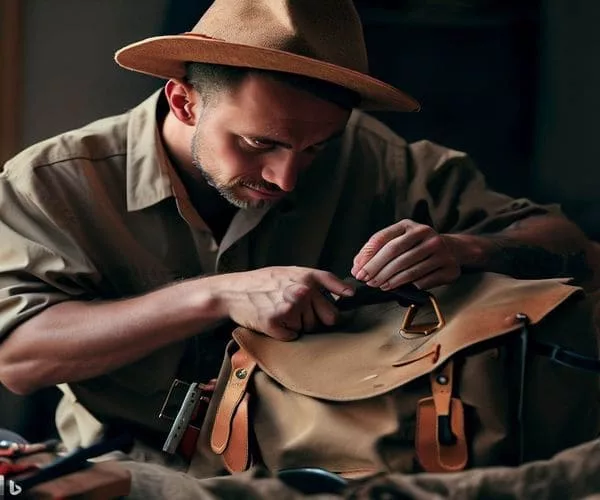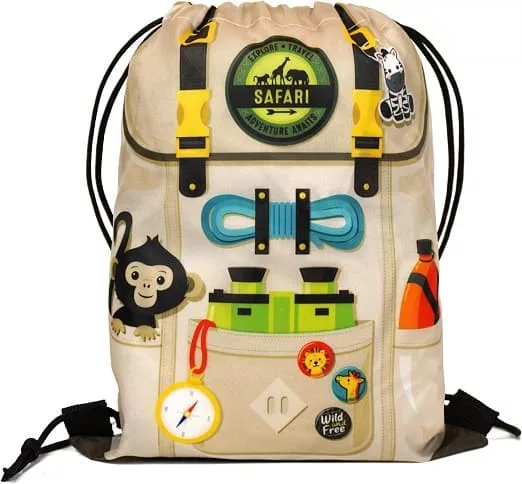
Are you an adventurer at heart? Do you love exploring the world and discovering new places? If so, chances are you’ve invested in a trusty safari bag to accompany you on your travels.
However, even the most well-loved bags can suffer from wear and tear over time. It can be tempting to replace your trusty companion when this happens.
But fear not! With a little know-how and some basic tools, you can easily learn how to repair a safari bag and get many more adventures out of it.
This guide will show you everything you need to know to breathe new life into your beloved bag. So dust off your sewing kit, and let’s get started.
Assessing the Damage
Before beginning the repair process, assessing the extent of the damage to your safari bag is crucial. Identify any tears, broken zippers, loose seams, or worn-out straps.
This initial evaluation will help you determine the specific repairs and materials required. Working in a well-lit area is advisable to ensure you don’t miss any small details.
Gathering the Necessary Materials
You will need a few essential tools and materials to repair your safari bag. These may include:
- Heavy-duty nylon thread: A sturdy thread that can withstand the weight and strain of the bag.
- Sewing needles: Choose needles that are appropriate for the thickness of your bag material.
- Fabric adhesive: A reliable adhesive that can securely bond torn areas together.
- Patching material: Use fabric patches made of the same material as your bag to cover and reinforce larger tears.
- Replacement zippers or zipper sliders: If your bag’s zipper is damaged, replacing the entire zipper or just the slider may be necessary.
- Buckles, clasps, or fasteners: Replace any broken or damaged buckles or fasteners to restore functionality to your safari bag.
- Scissors, pliers, and seam ripper: These tools will help you cut, remove stitches, and manipulate fabric during the repair process.
Repairing Small Tears
Start cleaning the damaged area and removing any loose threads for small tears in your safari bag. Apply a small amount of fabric adhesive on both sides of the tear and gently press them together.
Allow the adhesive to dry completely before continuing. For added durability, reinforce the repaired area with a patch on the inside of the bag, using fabric adhesive or sewing.
Fixing Loose Seams

Over time, the seams of a safari bag can come loose or unravel. To fix loose seams, use a seam ripper to remove any loose threads. Apply fabric adhesive along the seam line and firmly press the fabric.
Alternatively, you can stitch along the original seam line using a heavy-duty nylon thread and a sturdy needle. This stitching technique, known as backstitching, provides extra strength to the seam.
Replacing Zippers or Sliders
A malfunctioning zipper can significantly hinder the functionality of your safari bag. To replace a zipper, start by removing the old one using pliers or a seam ripper. Make sure to note the direction in which the slider moves.
Align the new zipper or slider with the existing opening, and secure it using a needle and thread or fabric adhesive. Test the zipper’s functionality before moving on to the next repair.
Reinforcing Straps and Handles
The straps and handles of a safari bag often experience significant stress. Inspect the attachment points for any signs of wear or weakness to reinforce them.
Stitch around these areas using a heavy-duty nylon thread to provide extra strength. Additionally, you can attach fabric patches to distribute the load more evenly and prevent further damage.
Maintaining Water Resistance
If your safari bag has lost its water-resistant properties, consider reapplying a waterproof coating. Many specialized sprays and solutions are available in the market.
Follow the manufacturer’s instructions carefully, ensuring the bag is clean and dry before application. This step will help protect your belongings during rainy or humid conditions.
Conclusion
When it comes to traveling, a good safari bag can make all the difference in the world. It’s spacious, durable, and can hold all of your essentials for the adventure ahead.
However, with all the wear and tear that comes with travel, your trusty safari bag may eventually need some repair. But fear not because learning how to repair a safari bag is not as daunting as it may seem.
With some patience and handy tools, you can easily breathe new life into your beloved travel companion and get back on the road in no time.
So don’t let a little wear and tear hold you back from your next adventure- grab that sewing kit and get to work.